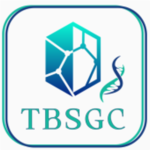
Rodger J. Wolfe-Welch Foundation Chair, Science
Dr James Sacchettini
Professor | Biochemistry & Biophysics, Chemistry
Professor Sacchettini’s research has primarily focused on the structure-guided drug design and synthesis of novel compounds which are being tested as drug candidates against tuberculosis, parasitic diseases, cancer, neurodegenerative diseases and most recently, covid-19.
The Sacchettini lab is primarily focused in broad aspects of mycobacterial processes that have been shown to be susceptible to chemical inhibition: transcription, translation, alternative central carbon metabolic pathways that are essential for bacterial survival in animal models, protein complexes required for cell wall synthesis, and essential enzymes that are prokaryote-specific and can be selectively inhibited. We utilize structural insight, cutting-edge genetic and chemical-genetic tools to understand mycobacterial biology and, in particular, identify pathogen vulnerabilities that can be exploited for drug design.
As part of the TBSGC, we use X-ray crystallography to determine the atomic resolution structures of Mtb proteins, alone and in complex with other proteins, natural ligands, and inhibitors. Our lab employs a variety of crystallization techniques and collects X-ray diffraction data using both home-based devices and US synchrotrons.
Over the last several years, the structures of a number of important Mtb proteins have been solved by Sacchettini lab, which contributes to our understanding of the biology of this organism and opens up new paths for drug discovery. Several potential drug targets are described below:
We identified a compound that kills Mtb by binding and partially inhibiting PptT, demonstrating that a key enzyme in CoA metabolism is a viable target for TB drug development. Our PptT-inhibitor co-crystal structure may aid further development of antimycobacterial agents against this long-sought target. We have used structure-guided methods to develop a lead molecule that targets the thioesterase activity of polyketide synthase Pks13, an essential enzyme that forms mycolic acids, required for the cell wall of Mtb. We are also currently working on acyltransferase domain of Pks13.
Isocitrate lyase (IcL) plays a pivotal role in the persistence of Mtb in mice by sustaining intracellular infection in inflammatory macrophages. The enzyme allows net carbon gain by diverting acetyl-CoA from β-oxidation of fatty acids into the glyoxylate shunt pathway. Given its potential as a drug target against persistent infections, we solved its structure without ligand and in complex with two inhibitors.
We report the development of phenyl-diketo acid (PDKA) inhibitors of malate synthase (GlcB), the second enzyme of glyoxylate shunt, using structure-based methods. Crystal structures of complexes of GlcB with PDKA inhibitors guided optimization of potency. A selected PDKA compound demonstrated efficacy in a mouse model of tuberculosis. The discovery of these PDKA derivatives provides chemical validation of GlcB as an attractive target for tuberculosis therapeutics. Our structural work on malate synthase is currently guiding two new inhibitor series development.
Other targets in the lab include validated drug targets like ribosome and RNA polymerase, as well as other proteostasis, cell wall biosynthesis and metabolic targets.
To learn more details, please visit the lab’s website below.
